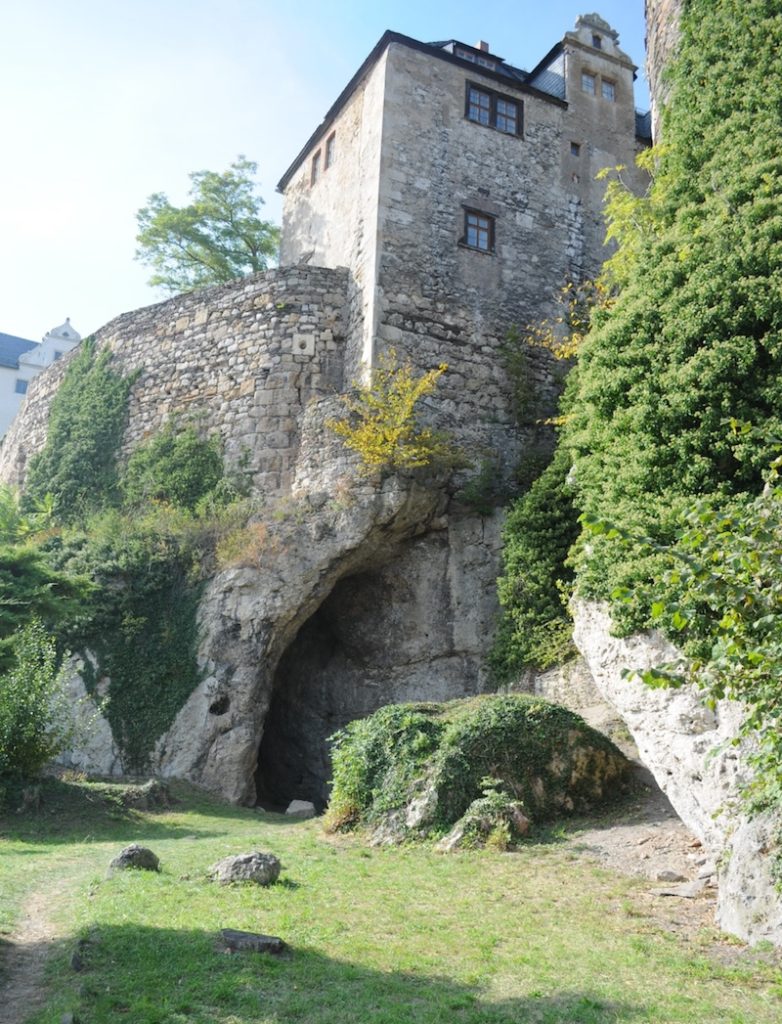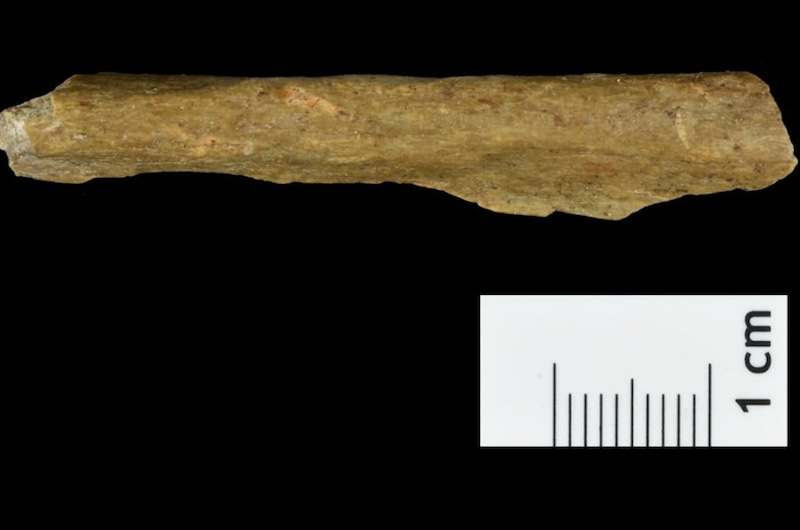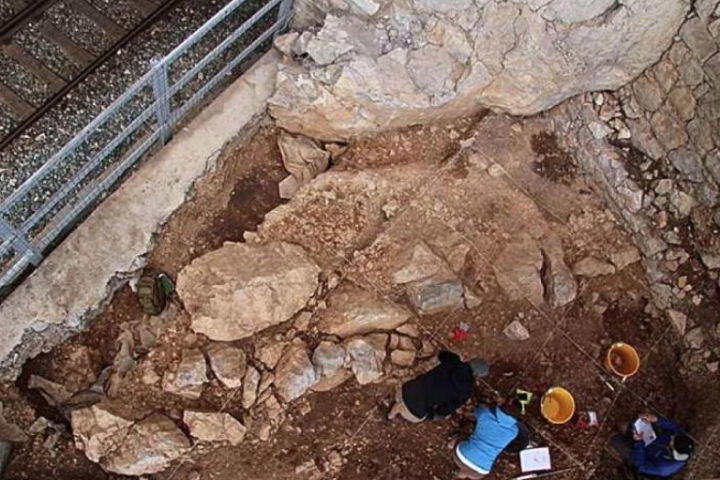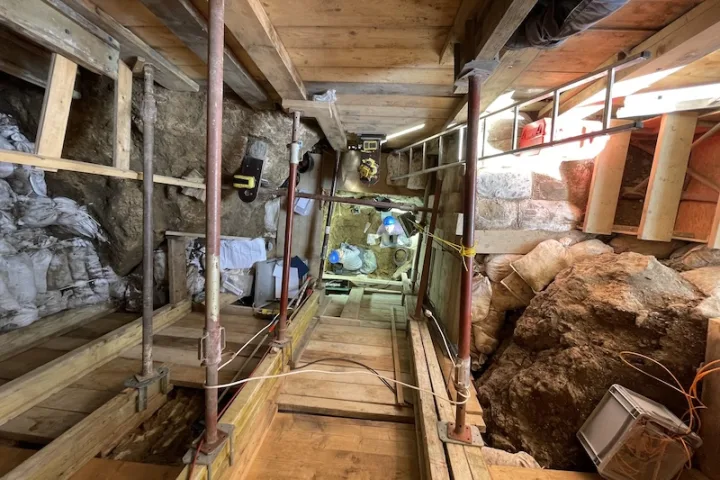The idea that two different human species, Homo sapiens (us) and Neanderthals, coexisted in western Eurasia between 50,000 and 40,000 years ago has long captured the imagination of both academics and the public.
It is therefore not surprising that the Middle-Upper Paleolithic transition period is a focus of research for many archaeologists, physical anthropologists and, more recently, geneticists.
Over the years, various scenarios have been explored, ranging from those suggesting tens of thousands of years of coexistence between the two human groups, whether through active or accidental replacement, or by outcompeting them in terms of resources, to those claiming that Neanderthals were replaced much more quickly by Homo sapiens.
Both possibilities allowed for occasional interbreeding, and this is why most of us, especially those of European and East Asian descent, have some Neanderthal in us.
But exploring this distant past has many challenges. Human skeletal remains are relatively rare; most of the best-known fossils were excavated under less than ideal conditions in the 19th and early 20th centuries.

When skeletal remains are found, questions often arise about their precise relationship to other archaeological remains from the same site, such as stone and bone tools, animal remains and other finds. Links between a particular human species and finds from an excavation often existed, but were later found to be false in some cases.
Major revisions
The transition period of 50,000 to 40,000 years ago is within the lower limits of radiocarbon dating, a technique that only works on organic remains up to about 50,000 years old. This means that more recent contamination of even the smallest amount of material in the burial environment or preserved in museums can make dating finds from these sites extremely challenging.
This has led to major revisions in the chronology of early human settlement over the past decade, shifting some dates for Neanderthal and modern human remains by thousands of years.
This is very important for the discussion, as it is impossible to talk about living together or taking their place without a solid chronology. There is also the issue of spatial scale. For example, does the continued presence of Neanderthals in southern Iberia after 40,000 years ago represent a long coexistence or a last stand on the margins of the continent, clearly avoiding contact with newcomers?
The latest contribution to the debate comes from the Ilsenhöhle cave in Ranis in eastern Germany, spectacularly situated at the foot of a 16th-century Renaissance castle with early medieval origins.
An international, multidisciplinary team identified human (Homo sapiens) remains in the cave from both early 20th century and more recent excavations and determined that they dated to around 45,000 years ago. When combined with the early dates of Homo sapiens in France and the various dates of Neanderthals in Europe from 45,000 years ago, this allows for a potential period of overlap between the two species lasting about 10,000 years, the authors say.
In a companion paper, researchers report the results of analyses of stable oxygen isotopes (different chemical forms of an element) from teeth belonging to mammals in the horse family (single-hoofed). These teeth were found at the same sediment levels as human remains. The results suggest that humans were here during a particularly cold period, around 45,000 to 43,000 years ago.
The remains of Homo sapiens are associated with what was previously considered an obscure stone tool industry (a specialized way of making tools), called Lincombian-Ranisian-Jerzmanowician (LRJ). But it is not clear whether they were made by Neanderthals or modern humans.
Mysterious tool makers
Other transitional Middle-Upper Paleolithic stone tool industries have a long history of the same problem; we are not sure who made them. The most notable of these is the Châtelperronian technology in southern France and northern Spain. Do the Neanderthal remains that accompany some of these “modern-looking” tool industries mean that they were toolmakers, or is this association coincidental?
This debate is in full swing with the recent identification of the hip bone of a possible Homo sapiens newborn child in the Châtelperronian assemblage recently unearthed at the Grotte du Renne in central France. Only Neanderthal remains had previously been identified there.
Most caves with Paleolithic remains were inhabited intermittently for thousands of years, often by both Neanderthals and Homo sapiens. Materials are easily mixed together and so it is difficult to tell who made them, as buried tools have not been found in modern human graves. Ranis seems to have an advantage in this regard, as the layers containing human remains and LRJ tools were sealed by a rockfall. But even here there is a caveat. The layers are still several thousand years old, and there may have been brief visits to the cave by both sides during that time.
New archaeological techniques
The results from Ranis provide important new data to our understanding of the Middle-Upper Palaeolithic transition, as well as highlighting the contributions of recent advances in archaeological science.
Far from unearthing a complete skeleton or skull, which would traditionally be the precursor to a new and important hominin fossil, only a few small bone fragments that could be recognized as human were unearthed at Ranis. Several other small bone fragments were identified as belonging to hominins (the wider human family) using a technique known as proteomics (the study of genus- and sometimes species-specific protein structures). This technique was also applied to the fauna of the region in another companion paper.
Relatively high-precision radiocarbon dates were then obtained for both the sediment level and the human remains. The precision of these dates was further improved through statistical modeling.
But most importantly for the question at hand, ancient DNA analysis (in this case mitochondrial DNA) has confirmed the identity of Homo sapiens. The mtDNA results link Ranis to other Early Upper Paleolithic human remains at Zlatý kůň in the Czech Republic and Grotta di Fumane in Italy.
As the authors of the Ranis study note, an intriguing twist in the story is that recent genetic research suggests that the Homo sapiens that made these first incursions into Europe appear to have been replaced by other Homo sapiens populations later in the Upper Paleolithic.
Therefore, the focus on the Middle-Upper Paleolithic transition and the replacement of one hominin population by another may need to be expanded to include similar subsequent events that remain much less visible because they all involve Homo sapiens.
republished from theconversation website. The Conversation. Rick Schulting. February 6, 2024.





